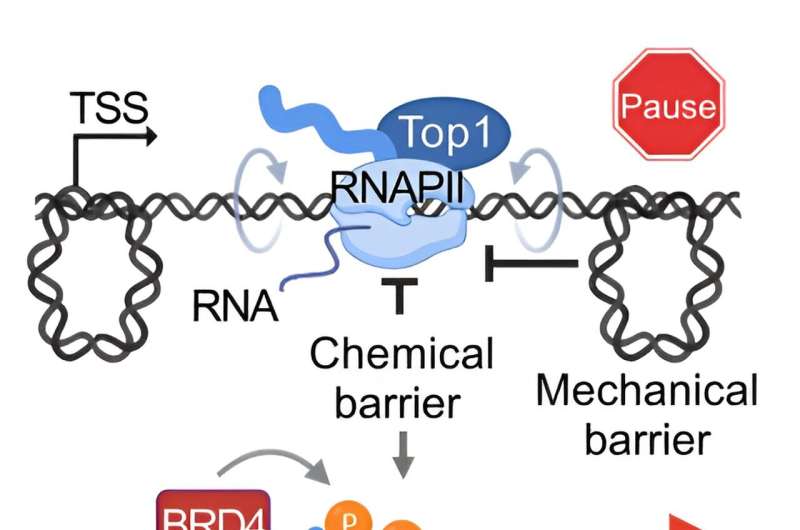This article has been reviewed according to Science X's editorial process and policies. Editors have highlighted the following attributes while ensuring the content's credibility:
fact-checked
peer-reviewed publication
trusted source
proofread
DNA tangles allow for targeted cancer therapy via topoisomerase drug treatment

A new publication in Science Advances from researchers at Karolinska Institutet shows how to use a specific cancer trait to improve treatment of pancreatic tumors.
DNA is like a long piece of string, and just like a string, it can get tangled. In cells, special proteins called topoisomerases are needed to detangle the DNA to properly use it again. These topoisomerases are the main research topic of Laura Baranello's lab from the Department of Cell and Molecular Biology. The group is especially interested in how cells regulate topoisomerases. This is because these proteins are common cancer targets. Due to their higher cell division rate, cancerous cells create more tangles in the DNA and are thus more dependent on topoisomerases.
In their most recent study, in collaboration with the group of Stephan Hahn at the Ruhr-Universität Bochum, the Baranello lab's aim was to use this cancer trait to improve treatment of pancreatic tumors. As pancreatic tumors are often only diagnosed at later cancer stages, they are among the most complicated to treat. The improved treatment strategy relied on combining a drug known to block topoisomerase activity with another one that acted on a topoisomerase regulating partner.
The authors could show that the combination treatment was more effective in killing cancerous cells. Interestingly, the enhanced treatment efficacy seems to be based on activity at the DNA which continues outside of genes, a process called readthrough transcription. Readthrough transcription is suggested to collide with the duplication of DNA, i.e., replication, which is needed for eventual cell division.
As cancerous cells divide much faster than normal cells, the combination treatment targets them specifically due to more frequent collisions. For this reason, it is possible to lower the doses of either drug which decreases treatment side effects, while still effectively killing the cancerous cells.
This study is based on human tumors grown in mice, which makes the results more easily applicable to human patients. Various biomolecular methods are used for investigation including sequencing approaches and qPCR, which allow for a detailed analysis of biological processes such as readthrough transcription. Furthermore, bioinformatic tools are employed to analyze the large amount of data generated.
Due to the complexity of treating pancreatic tumors, harsh treatments have been used to slow down the growth and spread of tumors. The combination treatment against topoisomerase offers a potential treatment alternative which can be equally effective while lowering side effects. Even though this is a preclinical study and further clinical investigation will be needed, the Baranello lab and their collaborators are optimistic that the combination treatment against topoisomerases will eventually be applied in a clinical setting as well.
More information: Donald P. Cameron et al, Coinhibition of topoisomerase 1 and BRD4-mediated pause release selectively kills pancreatic cancer via readthrough transcription, Science Advances (2023). DOI: 10.1126/sciadv.adg5109



















